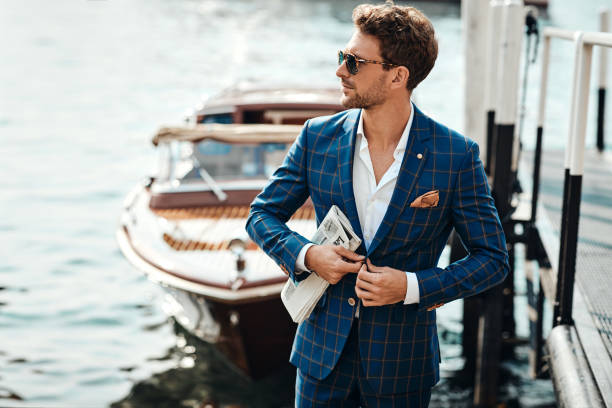Introduction
Fashion is a dynamic and ever-evolving industry that reflects the zeitgeist of society. From the flapper dresses of the 1920s to the athleisure wear of the 21st century, fashion trends offer a unique window into the cultural, social, and economic milieu of different eras. This article delves into the fascinating world of fashion trends, exploring their origins, evolution, and impact on society.
The Origins of Fashion Trends
Fashion trends often originate from various sources, including designers, celebrities, and subcultures. Historically, fashion trends have been influenced by the aristocracy and the elite. For instance, the elaborate gowns and powdered wigs of the 18th century were emulated by the upper class before trickling down to the masses. Today, fashion trends can emerge from streetwear, social media influencers, and global events.
The Evolution of Fashion Through the Decades
Fashion has undergone significant transformations over the decades. The 1920s saw the rise of the flapper dress, symbolizing women’s liberation. The 1950s introduced the iconic hourglass silhouette, epitomized by Christian Dior’s New Look. The 1960s brought the mod and hippie styles, reflecting a period of cultural revolution. Fast forward to the 1980s, and we see the dominance of power dressing, characterized by bold colors and oversized blazers. The 21st century has embraced a more inclusive and diverse approach to fashion, celebrating individuality and sustainability.
The Role of Technology in Shaping Fashion Trends
Technology has had a profound impact on fashion trends. The rise of social media platforms like Instagram and TikTok has democratized fashion, allowing trends to spread rapidly across the globe. E-commerce has also revolutionized the way we shop, making it easier to access the latest trends. Additionally, advancements in textile technology have led to the creation of innovative fabrics, such as moisture-wicking materials and smart textiles, further influencing fashion trends.
Sustainable Fashion: A Growing Trend
In recent years, there has been a significant shift towards sustainable fashion. Consumers are becoming more conscious of the environmental impact of their clothing choices. This has led to the rise of eco-friendly materials, ethical production practices, and the popularity of second-hand and vintage clothing. Brands like Patagonia and Stella McCartney are leading the way in promoting sustainable fashion, proving that style and sustainability can go hand in hand.
The Influence of Celebrity Culture on Fashion Trends
Celebrities have always played a pivotal role in shaping fashion trends. From Audrey Hepburn’s little black dress in “Breakfast at Tiffany’s” to Kanye West’s Yeezy line, celebrities can turn an outfit into a global phenomenon overnight. Today, social media influencers wield similar power, with their fashion choices often setting new trends and dictating the latest must-haves.
The Impact of Global Events on Fashion
Global events, such as economic crises, pandemics, and social movements, can significantly influence fashion trends. For example, the COVID-19 pandemic saw a surge in loungewear and athleisure as people adapted to working from home. Similarly, social movements like Black Lives Matter have inspired fashion brands to prioritize diversity and inclusion in their designs and marketing strategies.
Predicting Future Fashion Trends
Predicting future fashion trends is a complex task that involves analyzing various factors, including cultural shifts, technological advancements, and economic conditions. However, some emerging trends suggest a continued focus on sustainability, inclusivity, and technology-driven designs. Virtual fashion shows, digital clothing, and the integration of artificial intelligence in fashion design are likely to shape the future of the industry.
Conclusion
Fashion trends are a reflection of society, culture, and technological advancements. They evolve over time, influenced by a myriad of factors, including celebrities, global events, and the growing emphasis on sustainability. As we look to the future, it is clear that fashion will continue to adapt and innovate, embracing new technologies and promoting a more inclusive and sustainable approach.
FAQs
1. What is the most significant factor influencing fashion trends today?
The most significant factor influencing fashion trends today is social media. Platforms like Instagram and TikTok allow trends to spread rapidly and globally, making it easier for designers and influencers to reach a wide audience.
2. How has sustainable fashion changed the industry?
Sustainable fashion has introduced eco-friendly materials, ethical production practices, and a greater focus on environmental responsibility. This shift has encouraged consumers to make more conscious choices and has pushed brands to adopt more sustainable practices.
3. What role do celebrities play in fashion trends?
Celebrities and social media influencers play a crucial role in shaping fashion trends. Their fashion choices often set new trends and influence consumer preferences, making them powerful trendsetters.
4. How do global events impact fashion trends?
Global events, such as economic crises, pandemics, and social movements, can significantly impact fashion trends. For instance, the COVID-19 pandemic led to a rise in loungewear and athleisure, while social movements have driven a focus on diversity and inclusion in fashion.
5. What are some predicted future fashion trends?
Future fashion trends are likely to include a continued focus on sustainability, inclusivity, and technology-driven designs. Virtual fashion shows, digital clothing, and the use of artificial intelligence in fashion design are expected to become more prevalent.

